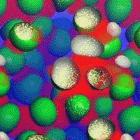Home > Press > Regulation must match advances in nanotechnology
 |
Abstract:
It is hailed as having the potential to help solve some of the developing world's biggest problems. But what can nanotechnology — the science of the infinitely small — really do? And what are its risks and benefits?
Regulation must match advances in nanotechnology
Bangalore, India | Posted on March 14th, 2011A top Indian scientist has asked policymakers to ensure that the regulation of nanotechnology keeps pace with advances in the field.
"We should not underestimate regulatory science," Maharaj Krishan Bhan, secretary of India's department of biotechnology, cautioned scientists from Germany, India, Japan, Singapore, Switzerland, the United Kingdom and the United States at a nanotechnology conference in Bangalore last week (8-9 December).
Bhan said that regulation did not merely imply processes, such as rules and regulations, but also 'regulatory science' in which scientists have detailed knowledge of health and environment risks.
"Institutions and scientists must do regulatory science and give us tools for updating knowledge in this area," Bhan said.
Of interest at the conference were nanoparticles of up to 100 nanometres (a nanometre is one-billionth of a metre) that show promise in improving medicine, food, agriculture and solar cells.
In medicine their applications range from targeted drug delivery; the discovery of 'biomarkers' to guide doctors in detecting disorders; the regeneration of nerve and cartilage tissues; and the repair of eye and spinal cord injuries.
Nanoparticles can help purify water, cleanse wastewaters, and act as sensors for toxic gases and explosives.
The conference also heard that, despite an overall increase in India's publications and patents in nanotechnology, the country still lags behind developed countries and China.
Between 2000 and 2007, China and India witnessed similar growth rates in publications (a little over 30 per cent), but India's growth rate in the number of patents granted in the sector was only six per cent compared with China's 31 per cent, observed Komal Shah, director of the Mumbai-based Innovar IP Consulting Group, which helps Indian industry with patents services.
"We have a huge pool of individual scientists in nanoscience and nanotechnology, but Indian industry is not the beneficiary," Shah observed.
Indian industry lags behind comparable countries in research and development (R&D) investment, Shah said. For example, of the 35,000 patent applications filed in the Indian patent office, 20 per cent are by domestic Indian companies and 80 per cent by publicly-funded institutes. In comparison, of the 250,000 patent applications filed in China so far, 62 per cent have come from domestic companies.
G. Sundararajan, director of the International Advanced Research Centre for Powder Metallurgy and New Materials, said: "Indian industry is cash-rich but not many are into R&D. As industry matures, we have to develop technology and commercialise it ourselves."
While industry in Japan and the US contributes to 75 per cent of R&D in nanoscience and nanotechnology, in India it contributes only 25 per cent, he said. Additionally, US investment in R&D stands at US$309 million, and Japan at US$159 million, but Indian investments are worth only US$43 million.
####
For more information, please click here
Contacts:
Margielyn Carino
Phone: 09331912504
Copyright © www.scidev.net
If you have a comment, please Contact us.Issuers of news releases, not 7th Wave, Inc. or Nanotechnology Now, are solely responsible for the accuracy of the content.
| Related News Press |
News and information
![]() Researchers develop molecular qubits that communicate at telecom frequencies October 3rd, 2025
Researchers develop molecular qubits that communicate at telecom frequencies October 3rd, 2025
![]() Next-generation quantum communication October 3rd, 2025
Next-generation quantum communication October 3rd, 2025
![]() "Nanoreactor" cage uses visible light for catalytic and ultra-selective cross-cycloadditions October 3rd, 2025
"Nanoreactor" cage uses visible light for catalytic and ultra-selective cross-cycloadditions October 3rd, 2025
Govt.-Legislation/Regulation/Funding/Policy
![]() New imaging approach transforms study of bacterial biofilms August 8th, 2025
New imaging approach transforms study of bacterial biofilms August 8th, 2025
![]() Electrifying results shed light on graphene foam as a potential material for lab grown cartilage June 6th, 2025
Electrifying results shed light on graphene foam as a potential material for lab grown cartilage June 6th, 2025
![]() Institute for Nanoscience hosts annual proposal planning meeting May 16th, 2025
Institute for Nanoscience hosts annual proposal planning meeting May 16th, 2025
Possible Futures
![]() Spinel-type sulfide semiconductors to operate the next-generation LEDs and solar cells For solar-cell absorbers and green-LED source October 3rd, 2025
Spinel-type sulfide semiconductors to operate the next-generation LEDs and solar cells For solar-cell absorbers and green-LED source October 3rd, 2025
Announcements
![]() Rice membrane extracts lithium from brines with greater speed, less waste October 3rd, 2025
Rice membrane extracts lithium from brines with greater speed, less waste October 3rd, 2025
![]() Researchers develop molecular qubits that communicate at telecom frequencies October 3rd, 2025
Researchers develop molecular qubits that communicate at telecom frequencies October 3rd, 2025
![]() Next-generation quantum communication October 3rd, 2025
Next-generation quantum communication October 3rd, 2025
![]() "Nanoreactor" cage uses visible light for catalytic and ultra-selective cross-cycloadditions October 3rd, 2025
"Nanoreactor" cage uses visible light for catalytic and ultra-selective cross-cycloadditions October 3rd, 2025
Safety-Nanoparticles/Risk management
![]() Onion-like nanoparticles found in aircraft exhaust May 14th, 2025
Onion-like nanoparticles found in aircraft exhaust May 14th, 2025
![]() Closing the gaps — MXene-coating filters can enhance performance and reusability February 28th, 2025
Closing the gaps — MXene-coating filters can enhance performance and reusability February 28th, 2025
|
|
||
|
|
||
| The latest news from around the world, FREE | ||
|
|
||
|
|
||
| Premium Products | ||
|
|
||
|
Only the news you want to read!
Learn More |
||
|
|
||
|
Full-service, expert consulting
Learn More |
||
|
|
||








